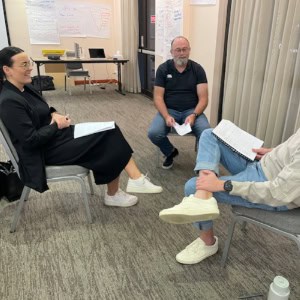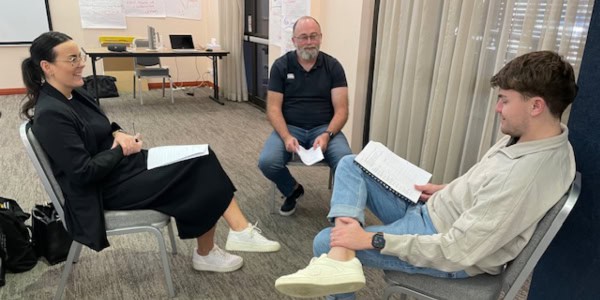When You Expect To Be Perfect (WT790)
BlogThis week’s thought is for all the learners who think they have to be perfect when they’re learning something for the first time.
Hand on heart, I know this personality well.
Years ago, I was learning how to set up a studio with greenscreens and lights for our online TV show.
The trainer was in the USA so we were waking up around 3:00am for a 4:00am class.
It was winter. We were in the garage and it was cold and uncomfortable.
“The lights aren’t right Ross”, I bellowed.
“You can see the edge of the greenscreen. It needs to be moved.”
On and on I went, getting more and more frustrated because my set-up wasn’t perfect.
Until …
Ross had had enough and he snapped back, “You’re learning. You’re not supposed to know this yet. That’s what you’re learning.”
So it’s top of mind for me this week as I watch some of our Leading Yourself and Leading Others students struggle to learn Active Listening.
It’s a hard skill to learn, let alone master.
You aren’t expected to be perfect. You aren’t expected to get it right when you’re learning.
Cut yourself some slack and stop overthinking it.
Remember Aristotle’s quote: “The thing you think you need to know how to do before doing, you learn by doing”.
To get to the 4th stage of learning, where you are “unconsciously competent” (i.e. it’s second nature to you, you don’t have to think about it, it’s a habit), you must first pass stages 1, 2, and 3.
As a reminder:
Stage 1: Unconsciously Incompetent (You don’t know what you don’t know)
Stage 2: Consciously incompetent (Now you know you don’t know something)
Stage 3: Consciously competent (You have to think about every step and practise practise practise)
It’s not until you get through stages 1, 2 and 3 that you can get to Stage 4.
Note to self: “You are learning. Don’t expect to be perfect. Take the pressure off yourself to get it right and stop overthinking it.”
I’m curious, what sort of learner are you?
P.S. Invite your friends to get the Weekly Thought delivered directly to their inbox.













